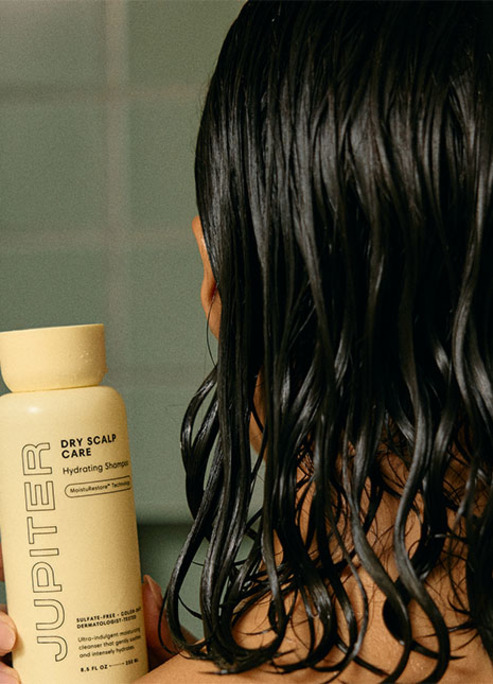
Looking For Non-Surgical Hair Regrowth?
We are going to reveal everything you need to know about it.
Suffering from hair loss can be traumatic, but it is way more common than a lot of people realize. It is easy to feel like you are alone when this happens to you, but that is not the case. One option that is available to you is PRP for hair regrowth, and we are going to reveal everything you need to know about it in this blog post.
What is PRP therapy?
There is only one place to begin, and this is by explaining what PRP therapy is. PRP stands for platelet-rich plasma, and it is a three-step medical treatment that involves a person’s blood being drawn. After this, it will be processed and then it is injected into the patient’s scalp. The purpose of this is to trigger the natural growth of hair by ensuring that there is an increased blood supply to your hair follicles. This can also boost the thickness of the hair shaft.
To thoroughly understand how PRP therapy works and why it is effective, you need to know about the role that platelets have in healing. Platelets are a component of blood, as well as white and red blood cells. When an individual suffers a wound or a cut, the platelets in their body are essentially some of the first responders that will stop the bleeding and promote healing. Researchers have theorized that healing could be accelerated if they were able to extract concentrated platelets, injecting them into areas of the body that were damaged.
To create PRP, a medical expert takes a blood sample, and then it is put into a centrifuge, which is a type of machine. The machine will spin at a rapid rate, with the components of the blood being separated as a consequence. The medical expert will then extracts the platelets so that they can be injected.
Step-by-step PRP process
So, now that you have a general idea about this approach to hair loss and the science that is behind it, we are going to reveal what you should expect if you have an appointment for this sort of hair loss.
The process is a three-step one, and we will outline each of the steps. To begin with, you will need to have three treatments, and these tend to be carried out between four and six weeks apart. Maintenance treatments are also going to be needed, and experts advise that you have these every four to six months.
So, with that cleared up, let’s take a look at the three steps:
- Your blood will be drawn. This is usually from your arm. The blood will then be placed into a centrifuge.
- After the blood has been in the machine for about ten minutes, your blood will have been separated into three layers. These layers are as follows: red blood cells, platelet-rich plasma, and platelet-poor plasma.
- The final step involves the platelet-rich plasma being drawn up into a syringe, which will then be injected into the part of the scalp that requires hair growth.
Are there any risks that are associated with PRP?

While the risks that are associated with PRP are rare, it is vital to be aware of them. After all, all treatments come with risks. However, by going down the non surgical route, you are always significantly reducing the chances of something going wrong. From a non surgical face lift to non surgical body contouring, there are so many treatments that are popular today because of their non-invasive approach!
One thing that you need to make sure you always do is talk with the expert carrying out the treatment about any medication you are taking, including any herbs or supplements you take. It is important to be honest here, as any medication you take could have an impact on the effectiveness and safety of the treatment, so lying is never a wise idea.
There are a few scenarios whereby this treatment may not be right for you. For example, if you are a heavy smoker or you are on blood thinners. You will also not be advised to have this form of hair loss treatment if you have a history of drug or alcohol misuse.
In some cases, you may not be able to have PRP if you have been diagnosed with any of the following: thyroid disease, low platelet count, sepsis, systemic disorder, platelet dysfunction syndrome, metabolic disorder, hypofibrinogenemia, hemodynamic instability, chronic skin disease, chronic liver disease, cancer, and chronic or acute infections.
Everyone is different, though, and so the best thing that you can do is book a consultation with an experienced professional. They will be able to analyse your scalp and learn about your current medical condition so that they can make their recommendations.
How long does PRP last?
Last but not least, it is vital to realize that PRP is not considered a cure for any cause of hair loss. As a consequence of this, if you do decide to go down this route, you are going to have to get a number of treatments so you can maintain your hair growth results. The same goes for medications that are commonly used as treatments. Oral finasteride and topical minoxidil are two examples here, which are commonly prescribed by doctors to treat androgenetic alopecia.
How often you will be advised to have this treatment is going to differ depending on the results of your first treatment and your condition. Some people may be advised to have maintenance injections every few months. There are then those who are only going to need to have maintenance injections every six months. The best thing you can do is follow your doctor’s recommendations because he or she will be familiar with your hair and they will be able to recommend what is going to be best for you.
So there you have it: an insight into PRP for hair regrowth. This is one of the best options that are available to you if you are suffering from hair loss. This three-step medical treatment has experienced great success and we have seen a lot of people around the world turn to it. If you are interested in this treatment, it is imperative to choose a licensed professional with care.











